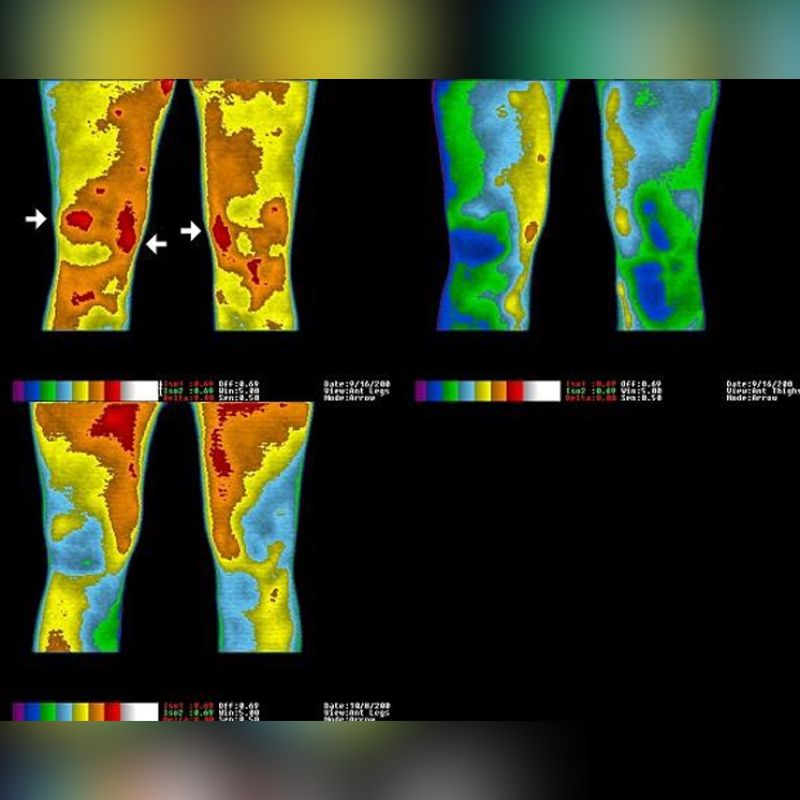
Case Study no. 5
In today’s article, we will examine a case study of a 48-year-old woman who experienced significant health improvement through the practice of grounding.
Let’s take a look at how grounding affected this patient's health.
The patient was enrolled in a randomized, controlled clinical trial that utilized Electron Transfer Technology (ETT), which is simply grounding.
The case presented below comes from a randomized, controlled clinical trial. The patient was exposed to clinical electron transfer technology (grounding) and monitored for changes 30 minutes later, then followed up during clinical visits over a period of 12 weeks. Progress was tracked using high-resolution medical infrared imaging and standard clinical outcome assessment questionnaires (a four-part visual analog pain scale).
The subject of this study was a completely disabled 48-year-old woman suffering from significant chronic bilateral knee pain (worse on the right side), knee swelling, and fatigue for the past 6 years. Her condition began as a result of an injury sustained while using a ladder. The patient had undergone 3 knee surgeries, long-term treatment, and physical therapy, none of which produced the desired results. She presented with knee braces, a noticeable limp, and required a walker for mobility.
After 30 minutes of exposure to clinical grounding, the patient reported a 20% reduction in pain, which lasted for 24 hours. After 5 days of clinical grounding, she reported a 30% reduction in pain along with an increase in energy, which she described as “almost back to my normal self.” After 2 weeks of treatment, the patient felt well enough to try dancing and did not report any worsening of symptoms. After 3 weeks, she no longer needed a walker. After 6 weeks of treatment, her limp had resolved.
By week 12, the patient reported an overall 90% reduction in pain and swelling and noted, “I can’t believe I got my life back.” Her infrared images showed a significant change, with clear improvement in inflammation in both knees. The images were consistent with her statement that symptoms were worse on the right side.
